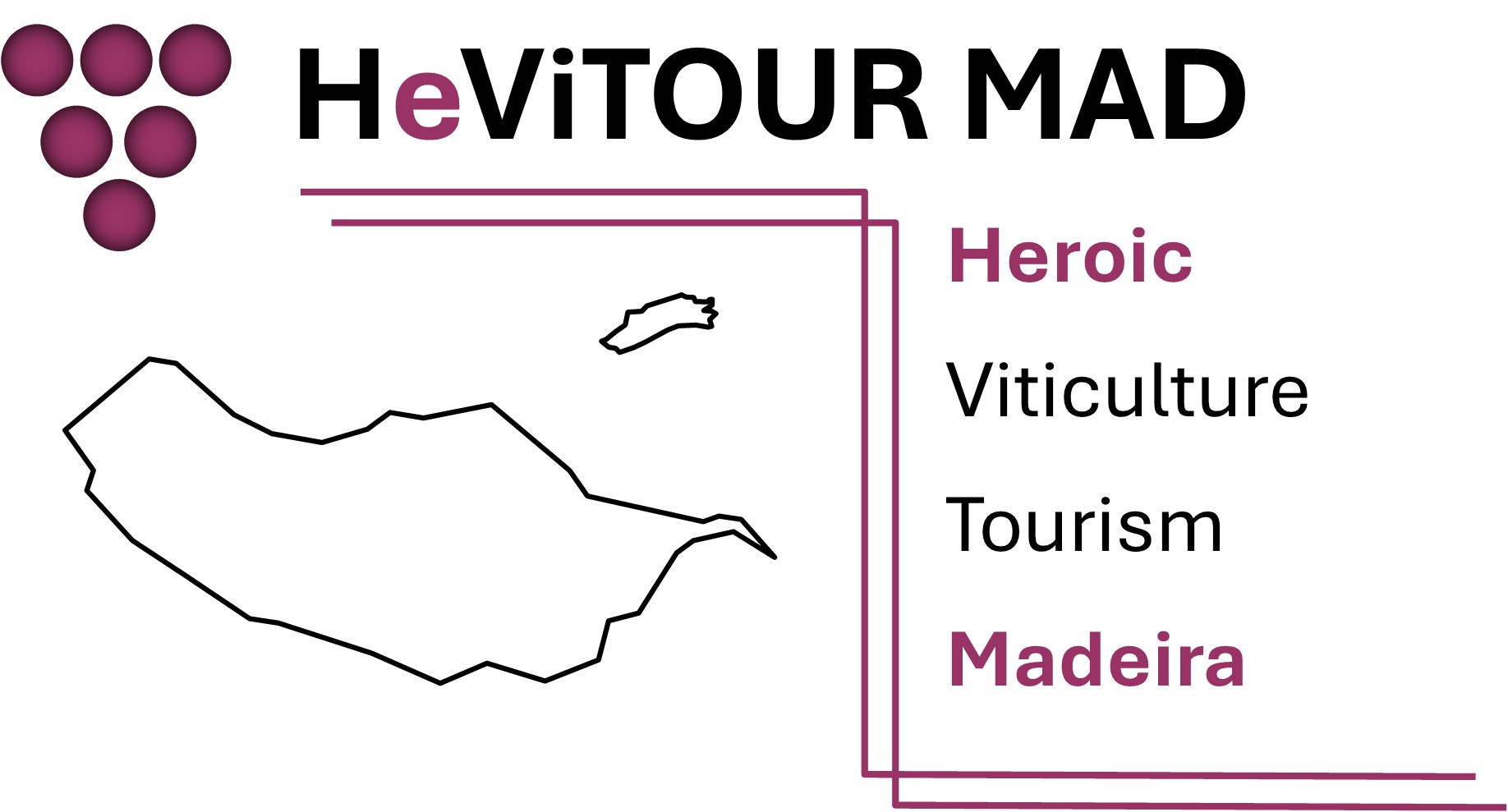This project aims to help small vinegrowers benefit from tourism, encouraging them to continue their activity and thus making heroic viticulture in Madeira viable.

Madeira is a highly attractive tourist destination, not only because of its natural riches but also due to its agrodiversity and cultural traditions. Notably, those associated with heroic viticulture date back to the time of settlement. Heroic viticulture refers to grape production under especially difficult and challenging conditions, such as on very steep terrain, poor soils, high altitudes, or extreme climates. These locations require intense physical effort, often involving manual labor and traditional techniques, as the use of machinery is unfeasible due to the rugged topography. Therefore, production is generally limited but yields unique wines with distinctive characteristics and a strong connection to the terroir.
This type of viticulture is valued not only for the quality of the wines produced but also for the cultural and heritage value it represents, preserving ancestral practices and promoting sustainability in often isolated regions. It is considered a form of precision and resilient agriculture that preserves landscapes and ways of life at risk of disappearing.
This is precisely what happens in Madeira, where vineyard work continues to be done manually as in the past, without the use of machinery due to the terrain, the small size of the planted plots, and their difficult access.
This heritage, which carries Madeira’s name to all corners of the world, today faces challenges that threaten its future. The aging of winegrowers is increasingly noticeable, and the abandonment of the activity is an ever more visible reality. Vineyards tend to be replaced by more profitable crops. In other cases, they give way to real estate developments, driven by the growing attractiveness of Madeira as a destination. This phenomenon is even more pronounced in areas planted with Tinta Negra, which is less well paid by the wineries.
Over the past decades, various measures have been taken by both the Regional Government and exporting companies to counter this decline. However, none have managed to stop it so far, and it has even accelerated recently. This project aims to help small winegrowers benefit from tourism, encouraging them to continue their activity. The defining characteristics of heroic viticulture make the family-run vineyards in the region particularly appealing to tourists, giving them a high degree of authenticity. Combining grape production with tourism would be a way to increase the profitability of this activity and make it more attractive to new generations. Thus, the main outcome of this project is to enable the continuity of heroic viticulture in Madeira.
This project is interdisciplinary, holistic, cross-sectoral, and committed to the goals of the UN 2030 Agenda. It involves three research centers from the University of Madeira: CITUR, ISOPLEXIS, and the Madeira Chemistry Center. The project’s objectives will be achieved by executing three complementary action pillars:
- ADAPT PRODUCTS: Wine tourism is a well-established sector in other regions of the world and is now beginning to gain some traction in Madeira. However, it is necessary to adapt the range of products typical of this segment to the very sui generis reality of the region’s heroic viticulture. Previous studies suggest there is great potential for growth in responsible tourism and so-called Slow Tourism, leveraging the rich agri-food and enogastronomic heritage of this island space, as well as its high sustainability. The aim now is to assess to what extent these niches could be beneficial specifically for heroic viticulture. Participant observation will be carried out to identify the obstacles, challenges, and potential of this new offering.
- ENHANCE VALUE: This action pillar aims to add value to the Tinta Negra grape variety, on which heroic viticulture depends for survival in Madeira. An underwater wine tourism experience will be created around an ARMAZÉM DE MAR (Sea Warehouse). This experience will simultaneously allow the study of the effects of the aquatic environment on the aging process of still wine made from Tinta Negra, as well as assess tourists' receptiveness to this type of experience. The purpose is to evaluate whether this emerging form of wine tourism is attractive to the profile of tourists visiting the Autonomous Region of Madeira (RAM) and whether it can help improve consumers’ perception of Tinta Negra. Perguntar ao ChatGPT
- BRING TOGETHER: This action pillar aims to explore innovative ways to connect small winegrowers and tourists. The main output of this action pillar is the design and testing of a mobile application. This will enable direct contact between small winegrowers and tourists interested in enjoying experiences related to heroic viticulture.
O projeto foi submetido à Fundação para a Ciência e a Tecnologia e encontra-se atualmente a aguardar o resultado do respetivo concurso. Assim, neste momento, apenas o primeiro eixo de ação (ADAPTAR PRODUTOS) está em fase de execução, com fundos destinados à preparação da candidatura das Tradições do Vinho Madeira.
O label HeViTOUR MAD identifica os produtores que participam neste projeto piloto.

To learn more about the vineyards you can visit, see aqui.
We explain how tourism can help sustain viticulture here.
Do you have a vineyard and want to welcome visitors? See how we can support you here.